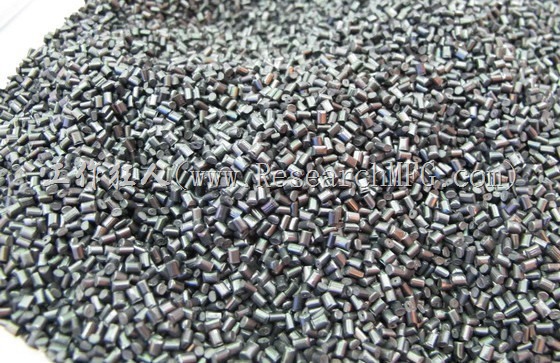
Workingbear’s company recently encountered a quality issue with a plastic product. The problem was, “Why is it that products made from the same type of plastic resin sometimes show normal MFI (Melt Flow Index) values, while others have unusually high values? When we asked the plastic injection supplier, they insisted they hadn’t added any regrind material.”
Previously, Workingbear shared how MFI testing can be used to control the quality of plastic resin during injection molding. Additionally, when plastic products experience brittleness or insufficient strength, the first step we take is to test the MFI either. This is because MFI is the cheapest initial indicator for assessing plastic product quality. However, based on Workingbear’s experience, MFI can only be used as a reference, not direct evidence to prove that an injection molding factory has added regrind material. This is because MFI can be affected by multiple factors, not just the addition of regrind.
Related Reading: The Relationship Between MFI and Regrind Resin
Based on Workingbear’s understanding, the following are some common reasons why the MFI of plastic resin might exceed the standard:
1. Was the resin re-pelletized or dyed?
If the re-pelletizing or dyeing process for the resin was not done by the original resin manufacturer, there’s a good chance the MFI value will increase. This happens because during third-party re-pelletizing, the original resin must be melted. Even if the pelletizing factory operates responsibly and doesn’t add recycled material, the long molecular chains in the plastic can still be affected by the color masterbatch or other additives. Improper control during the re-pelletizing process can also break the long molecular chains.
Related Reading: Resin Property Changes During Coloring and Re-pelletizing
2. Excessive addition of regrind or recycled material
Adding regrind or recycled material will definitely impact the MFI value. Whether you’re adding scrap from the same resin (such as sprues and runners) or secondary materials, the effects are inevitable. Even if the added material is from the same type of resin, the leadscrew in the injection molding machine can damage the long molecular chains during processing. Adding materials from different types of resin will have an even greater impact.
Workingbear has already written several articles on this topic, which you can refer to below:
Related Reading:
- Potential Causes of High MFI in Plastic Resins
- Why Recycled or Regrind Plastic Reduces Strength After Injection Molding
- The Relationship Between MFI and Regrind/Recovered Resin
- 7 Ways to Determine if a Supplier Has Added Regrind Resin
3. The plastic resin being tested for MFI wasn’t properly dried or dehumidified.
Some plastics, like PC (polycarbonate), are highly sensitive to moisture. If these resins are not pre-dried and dehumidified according to the resin supplier’s specifications before MFI testing, unexpected results may occur, potentially affecting the MFI value.
4. Using different MFI testing machines or varying testing conditions.
This issue often happens when testing is conducted in different locations or labs, as the equipment used may differ. If proper calibration is not performed, the test results can vary significantly.
Another factor to consider is the temperature and load settings. While ASTM D1238 specifies standard temperature and load requirements, testers sometimes adjust these settings due to practical challenges. For example, if the molten plastic flows too quickly or doesn’t flow at all, testers might increase or decrease the temperature and load, which can lead to inconsistent results.
Additionally, the test duration is a critical factor. ASTM D1238 generally specifies measuring the total weight of the plastic extruded in 10 minutes. However, many testers shorten the test duration for reasons such as material shortages, time-saving, or cost-saving. In some cases, only 1 minute or even 10 seconds of testing is conducted, with the results extrapolated to estimate the 10-minute weight. When this happens, the test report should clearly indicate and explain these deviations.
5. Resin was over-dried or left too long in the injection molding machine barrel.
Over-drying the resin can cause degradation, leading to an increase in the MFI value. Similarly, leaving the material in the injection molding machine barrel for too long can also result in degradation.
6. The injection molding machine’s temperature was set too high, causing resin degradation.
7. The injection molding machine’s screw speed was set too fast, causing resin degradation.
》Back to Plastic & Injection Molding
Related Posts:







Leave a Reply